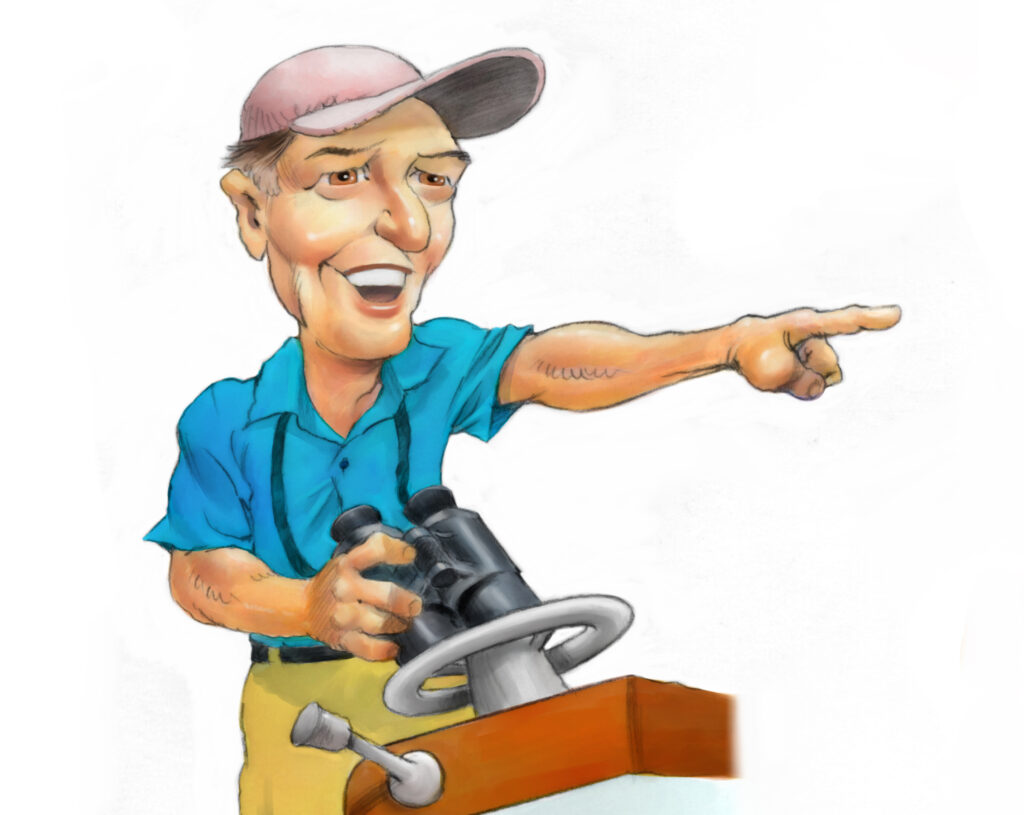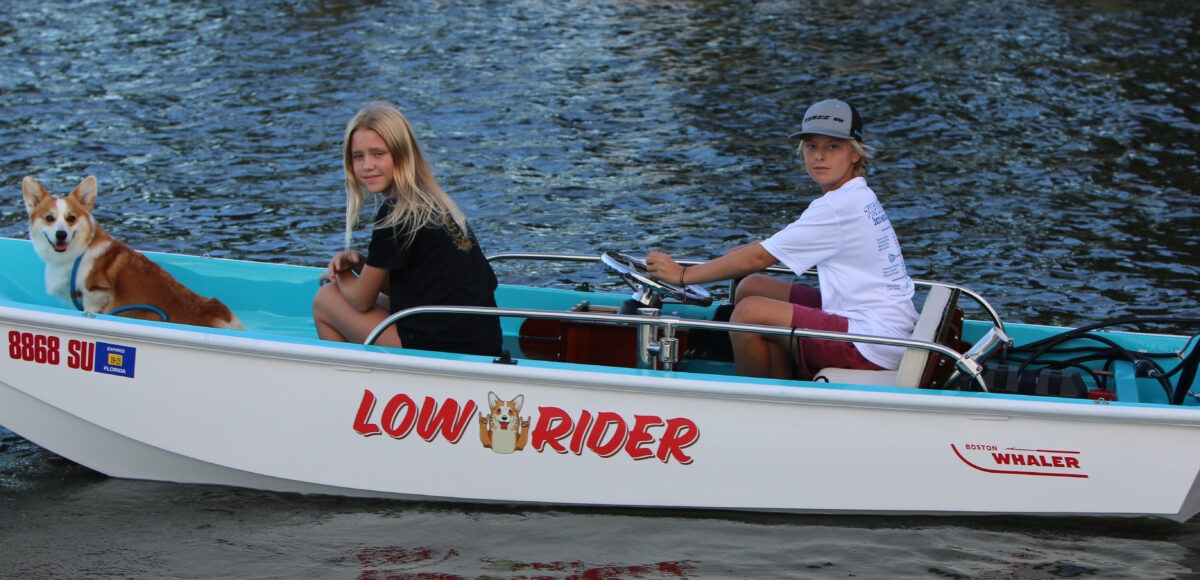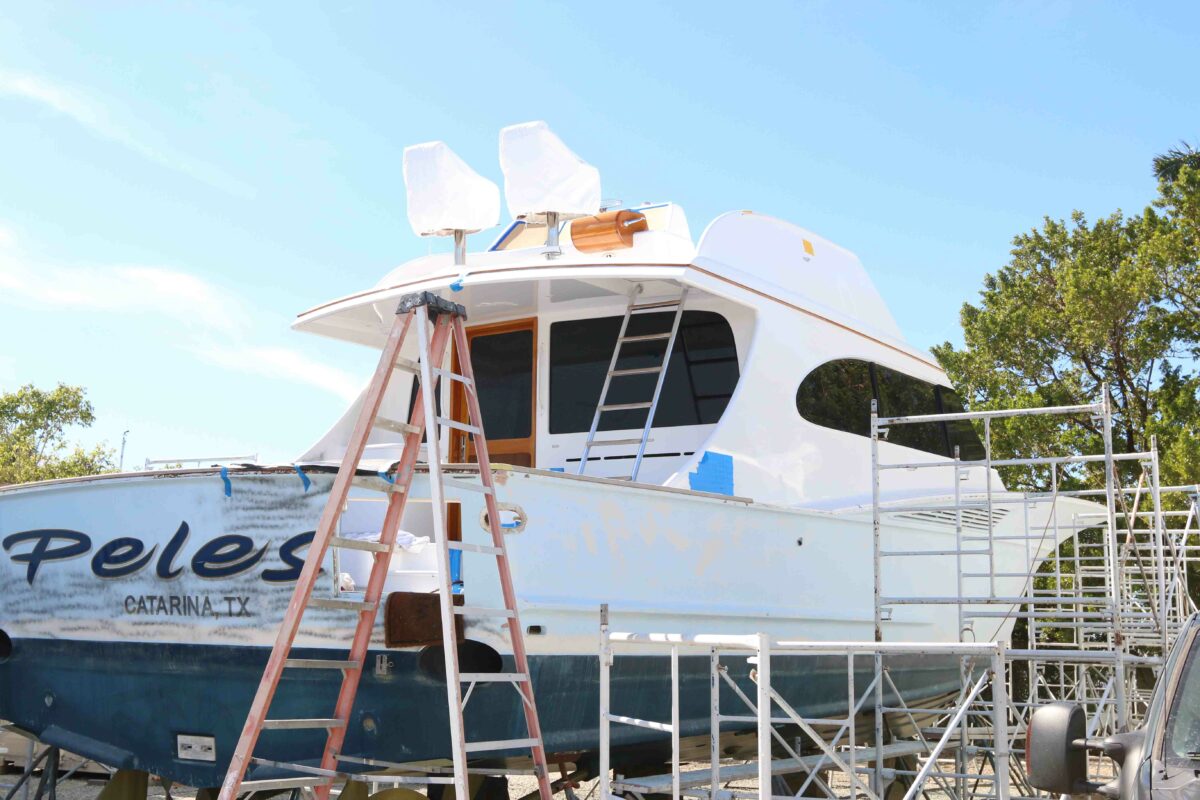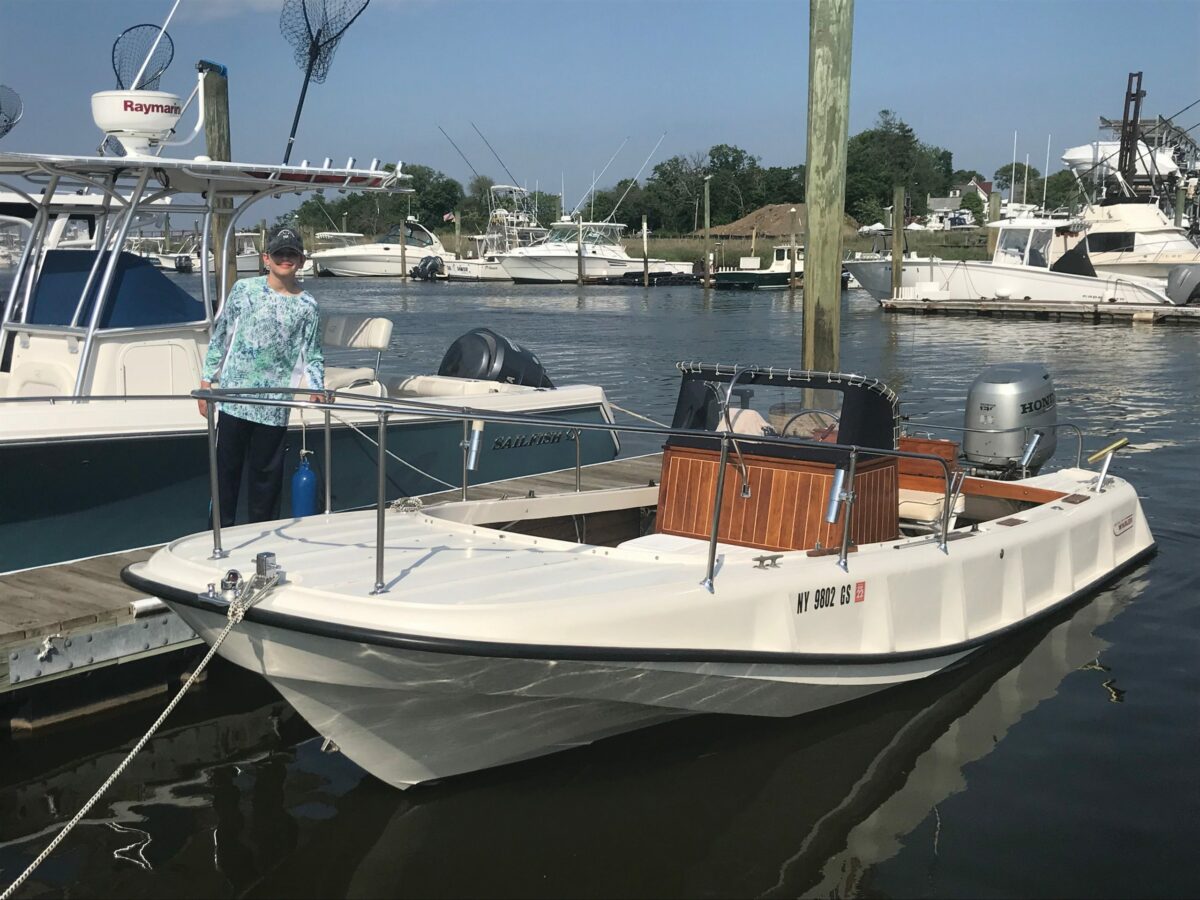Introduction to Boat Refitting
The Allure of Restoring Classic Boats
I’ve been through the refit process several times, on both large and small scales. I’ve always been the kind of guy who likes the idea of restoring a tired, classic old boat to its former glory, thereby ending up with a killer boat, cheap. But as I’ve learned, and many others in this issue will remind you, “cheap” can be a relative term.
Table of Contents
The Refit Journey: From Vision to Reality
Choosing the Right Project
We all know the free lunch doesn’t exist, but the allure and challenge of bringing a classic boat back from a sad condition can be exciting. I guess it all comes down to setting realistic expectations for the project and understanding that you will inevitably encounter problems you didn’t know existed when you started. These can be minor, or major, or a combination of the two, but they will crop up. Count on it.
Case Study: The 35 Bertram Refit
Budget Realities and Compromises
Refit projects can be undertaken with boats you already own and want to keep rather than replace, or with a boat you want to rescue from a local boatyard where someone else gave up on it. These projects can be small in scope or involve taking the boat down to the stringers to refasten everything and then rebuild it from the hull up, or everything in between. My first refit project involved an old 35 Bertram that I found abandoned in a Fort Lauderdale boatyard many years ago.
We knew from the start that the boat needed a hull-up refit because the original gas engines were solid blocks of rust and we planned to repower with diesels anyway. Bill Knowles, the late Stuart, Florida custom boat builder, signed on to do the project for me and we were off. I bought a pair of 300 hp Cummins B-Series engines and Knowles’ crew proceeded to gut the boat.
We ran into our first unforeseen issue almost immediately when we discovered that the aft cabin bulkhead had rotted where it met the deck and couldn’t be repaired. Time for a new bulkhead. We already knew the cockpit deck had rot in it and had planned to replace that from the beginning, but the bulkhead came as a pricey surprise. We also decided to add sister frames to some of the transverse bulkheads and to beef up the stringers too.
Little issues kept popping up, but we dealt with each of them in turn. The problem, of course, came when these unforeseen items began eating into our carefully crafted original budget. We blew through that in no time, which is typical, and began deleting items from the original wish list. We decided that installing a generator could wait, which saved some money, and we cut as many minor corners as we could to get the boat finished and usable.
When the day came to splash the boat, the finished product had turned out significantly different than what we had originally envisioned, but it was still awesome, and we ended up putting a generator in a year down the road. We caught a ton of fish out of that little boat and spent many a happy family day in the Bahamas aboard her. Perhaps most importantly, I learned a great deal about the refit process. It ended up being nothing like I had originally envisioned, because nobody, including me, likes spending money on things like rotten wood. We’d all rather buy cool things like towers and the latest electronics. But it is what it is.
Technical Considerations in Boat Refitting
Engine Replacement and Power Considerations
Unless you have unlimited funding, budget considerations must be carefully examined. If you’re considering refitting a boat you already own, sometimes it doesn’t make financial sense to redo an older boat when it might be wiser to sell what you’ve got and then seek out a newer boat that’s equipped like you want it to be and has fresher equipment. Repowering may be the biggest option in a refit, but as great as it is to have fresh engines, removing old inboards and installing new ones is a major undertaking. There’s no getting around that.
Most people repower to get newer engines that will give them better cruise speeds. But you must be careful when dropping new power into older hulls and pushing them faster. Your center of gravity will almost certainly change, and your older hull may not handle all that extra power like you think it will. Some boats weren’t meant to go fast. In any case, a repower can require bringing in someone like a naval architect to advise you on these issues, which will drive the cost higher.
Aesthetic and Functional Upgrades
Modernizing
Applying new paint often sits toward the top of a refit list, but if you’ve ever done a full paint job on an older boat, you know what a giant pain that is. You must take everything off the hull before you begin, and that alone is time consuming and tedious. Then you must sand the hull and fair it, a labor-intensive process when you do it right. And you need to do it right because today’s super-hard paints have little tolerance for poorly prepared surfaces. If you don’t get the surface smooth enough, your boat might look like it has varicose veins, not a pretty sight.
Other refit projects seek to add modern amenities like Omni sonars, gyroscopic stabilizers, water makers, or Eskimo ice machines.
Lots of owners have switched out their head systems for closed, fresh-water units, and every few years, the electronics companies up the ante by introducing cooler and cooler looking gear, making all of us feel vaguely dissatisfied with our old gear and coveting the new stuff. I think that’s their plan, in fact. The reality, though, is that even replacing your electronics can turn into a complex job when lots of new wiring must be pulled. You don’t just pop one unit out and put another one in.
Refit vs. Refresh: Understanding the Difference
Minor Enhancements vs. Major Overhauls
All the above-mentioned items add both weight and complexity, both of which must be taken into consideration. Of course, there are a lot of minor things you can do to a boat that will make it look better but won’t break the bank. Things like new carpet, a new teak deck, new soft goods and curtains or blinds, etc., are reasonably low impact jobs, but can certainly make an older boat look better. But I don’t know if they qualify as a refit or not. What’s the difference between “refitting” and “refreshing?” I’m not sure, but it’s an interesting question.
The bottom line is you can do as little or as much as you like, and while the money matters, it’s not the only thing to consider. If you have a boat you really like and you plan to keep it, the investment in personal happiness outweighs the potential loss of resale value. I always argue with people who say boats are bad investments, because I believe the opposite: There’s no better way to spend your money! The freedom and opportunities for adventure they provide can’t be measured, so whether you’re looking to do something simple, or take a boat down to the stringers and rebuild her from the ground up, keep that in mind. Plan carefully but do it.
Reader Experiences: Real-Life Refit Stories
40 Whiticar, Gannet II: Comprehensive Overhaul
Ben Swift is a young boat builder who builds cold molded 24-foot center consoles at his company, Swift Boatworks. Since November of 2022, he and owner Josh Noveletsky of PIP Lifts have been refitting an old 40-foot Whiticar sportfish formally known as Gannet II. Rosenthal started the project, but Swift has joined him and has built a new helm on the flybridge and is now working down below on cabinetry and other finish work in the salon and forward vee berth.
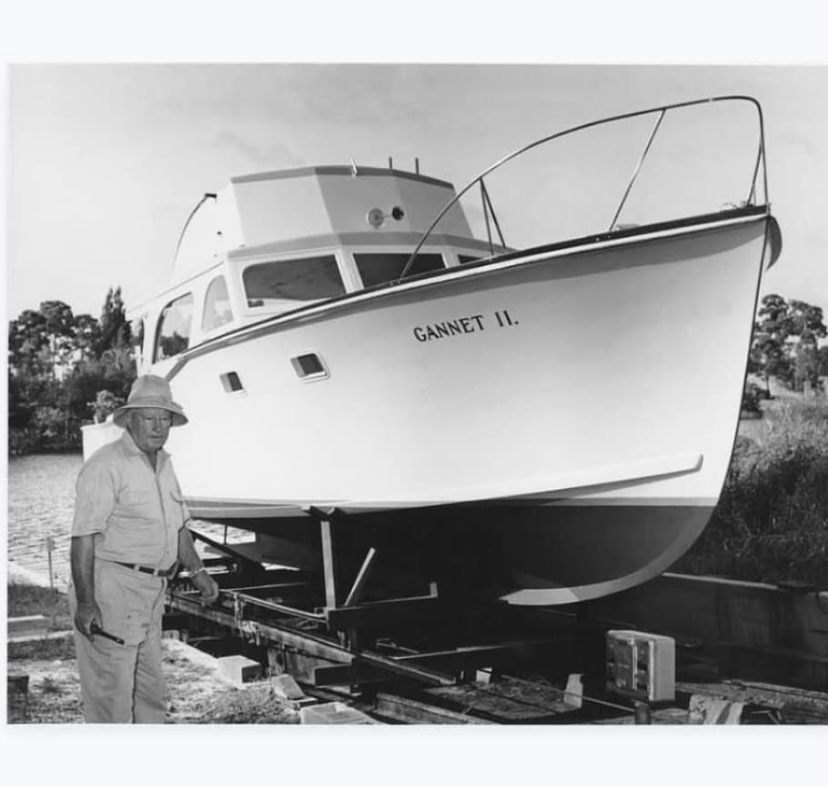
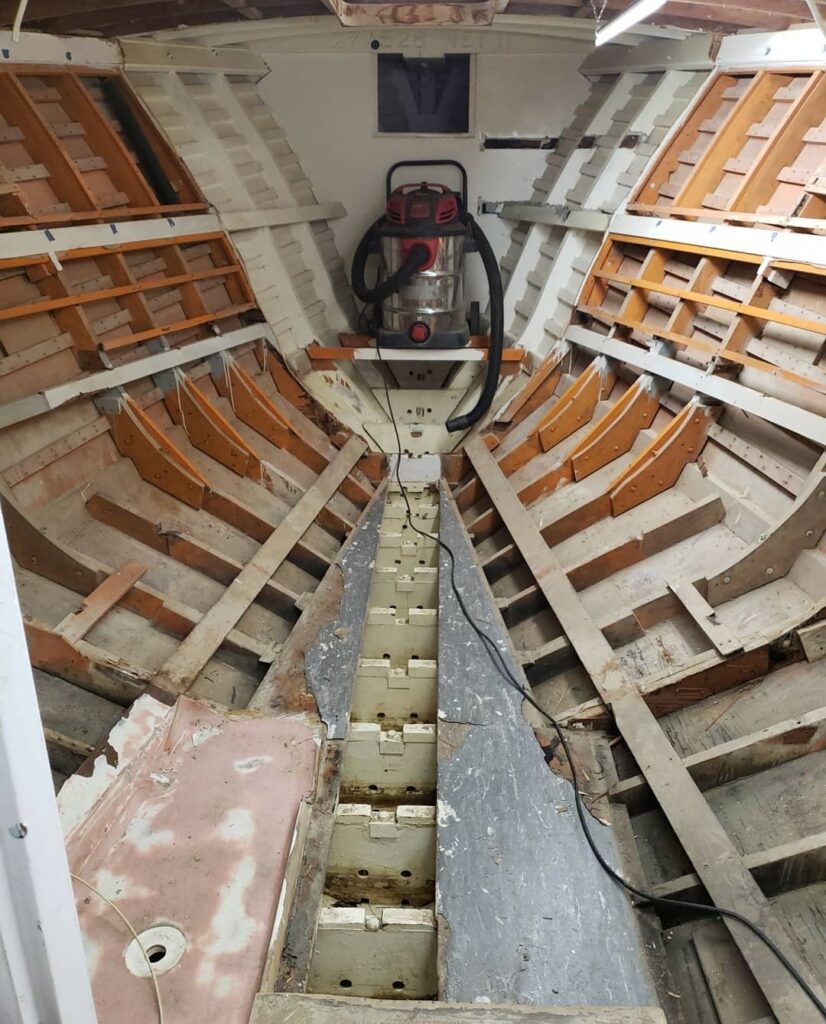
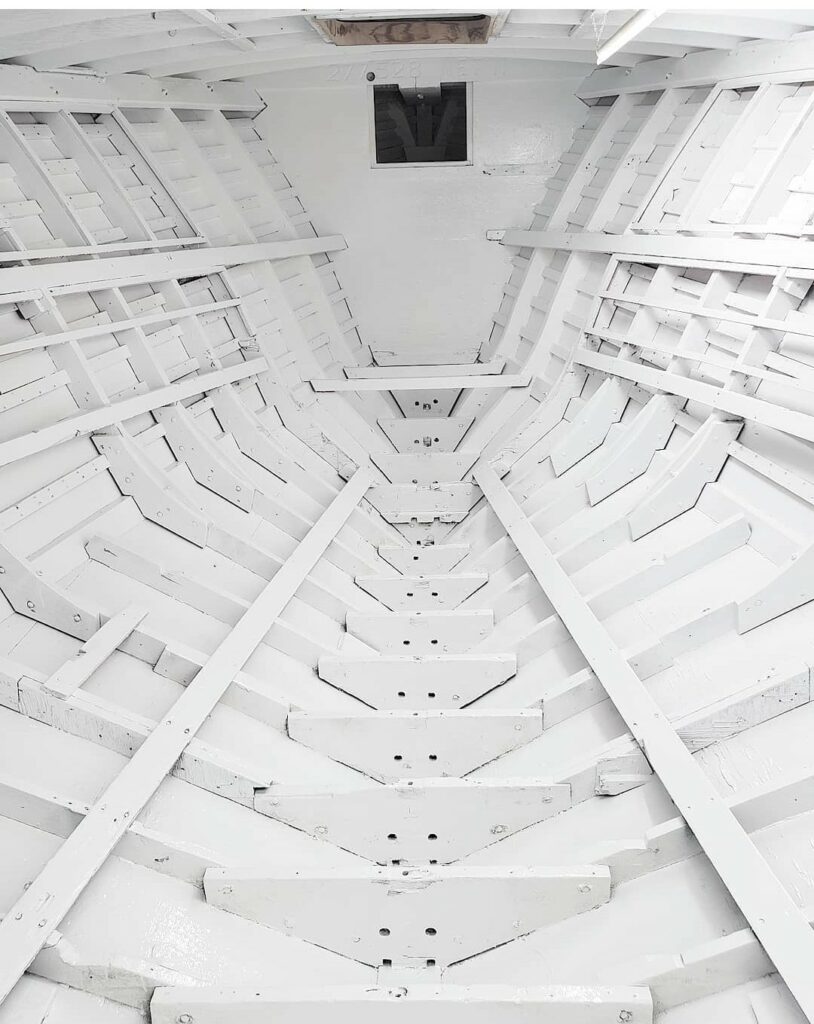
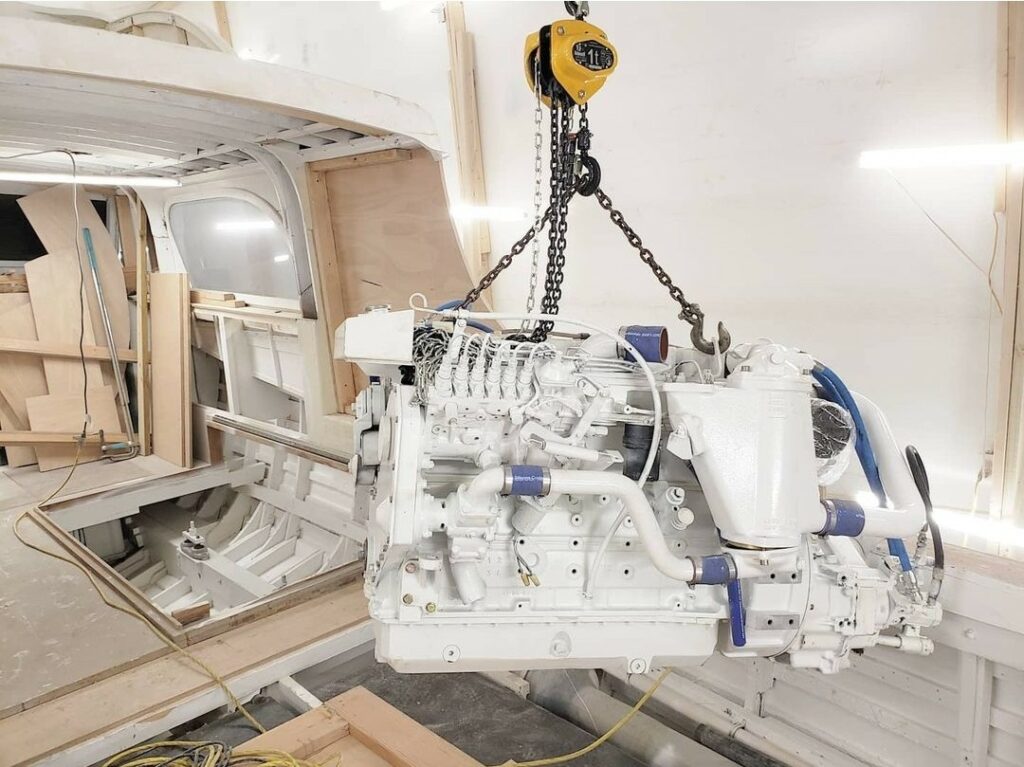
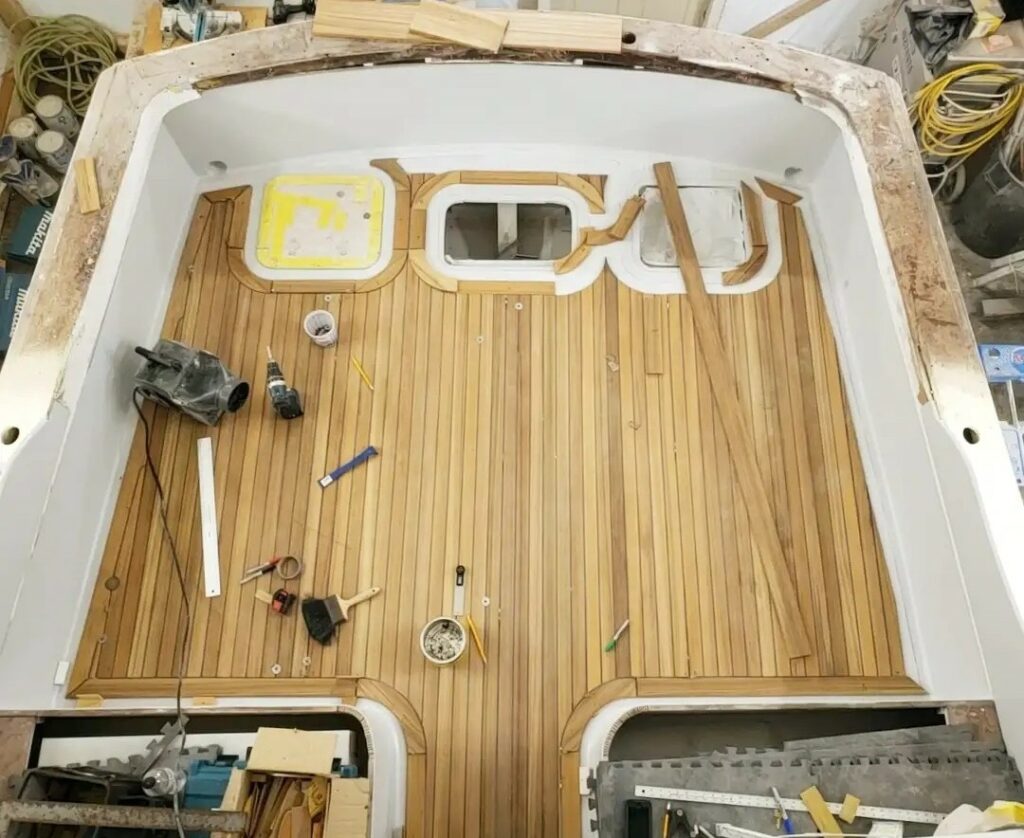
63 Scarborough, Big Oh: Major Refit and Re-power
In January, 2022, Big Oh headed to Ricky Scarborough’s boat yard in Wanchese, North Carolina to undergo a major refit and re-power. They removed the 1700 hp CAT C32Acerts and installed 1550 hp MAN V12s with Twin Disc MGX6599A gears with a 2.25:1 gear ratio. Led by Capt. Newt Cagle, the crew stripped, cut, and removed everything from the forward bulkhead in the salon and engine room, aft to the transom, including the aft bulkhead. That created room for Hathaway Marine to remove the motors and generators. They removed the shafts and with a blank canvas, got to work modifying the existing structures to be built back accommodating the new machinery and layout. In the engine room, they removed four frames under each engine bed, leaving them flush with each stringer, and reinforced the planking in the engine beds with two laminated layers of green board. This was done to accommodate mounting the new MAN engines level with down-angle gears.
They added four sea chests to replace the old through hulls, two aft sea chests for the generators and main engines, and two forward sea chests, port side for water makers, and the starboard side for raw water pumps with an Electro Sea return. The engine room was prepped for Cloud White Awlcraft 2000 paint, and the floor, flat surfaces, and high traffic areas were painted light grey Raptor liner. They changed from a three fuel tank configuration that had two 600-gallon saddles with a crossover, and a 300-gallon center tank between the stringers, to a single aft tank to gain fuel capacity. That required taking three inches off the top of the stringers in that area. To add back the strength removed, they notched the frames out four inches where they met the outboard side of the stringers and added boards to widen the stringers. Then they designed an H-shaped tank with a sump between the stringers, gaining an additional 300 gallons of fuel. Now having a template, all the bedding over the frames could be rebuilt to accommodate the new tank. Once the fuel tank was installed, new bulkheads were built forward and aft of the fuel tank to support a new composite deck, which was built on a jig in the shop. The generators (20kw Northern Lights) were moved aft of the engine room bulkhead, on aluminum shelves custom built by Hathaway Marine. They installed two ElectroSea 1.5-inch raw water pumps, with an ElectroSea system. Two new custom raw water manifolds as well as all new plumbing to our self-contained Dometic A/C units.
Hathaway Marine, in conjunction with Southside towing services, installed the new main engines and gears, and reinstalled generators on their new shelves. In late summer, they installed the new cockpit deck and mezzanine, the mezzanine, which contains a large L-shaped ice dump incorporating the top and bottom levels to make a single large box, a full depth bait freezer (top), large drink box (bottom), engine room hatch, a large secondary drink box or freezer (top step under door), a storage step, a three-drawer tackle center with open storage at the bottom with an outlet and ice maker control, and a large bait box that runs all the way to the bulkhead under the tackle center.
For lazarette access, they installed a hinging Freeman hatch, creating a watertight seal protecting the new Optimus steering system. Finally, they installed a brand-new teak deck. The interior got new couches (port), a new love seat (starboard, under the tv), and the existing dinette got replaced by a bar top complete with a set of True freezer drawers, and a coffee cabinet. The entire boat was converted to LED lighting and the salon’s original whisper wall ceiling was replaced with padded panels running fore and aft, accented by longitudinal teak trim pieces.
Just shy of one year of operation, the refitted Big Oh has logged 1,500 hours and 3,100 billfish releases throughout the Pacific coast of Mexico. And with the newer, more efficient MAN power, they are comfortably cruising at 15-20 gph less than before and enjoying the quietness of the MAN 12-cylinder common rail engines.
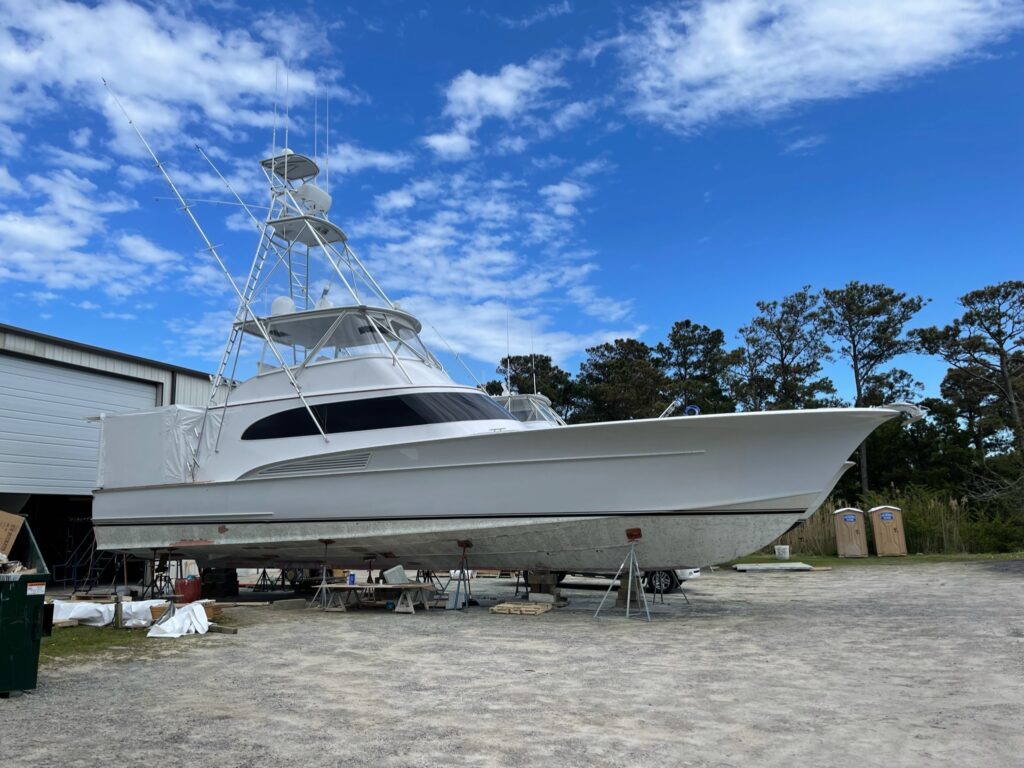
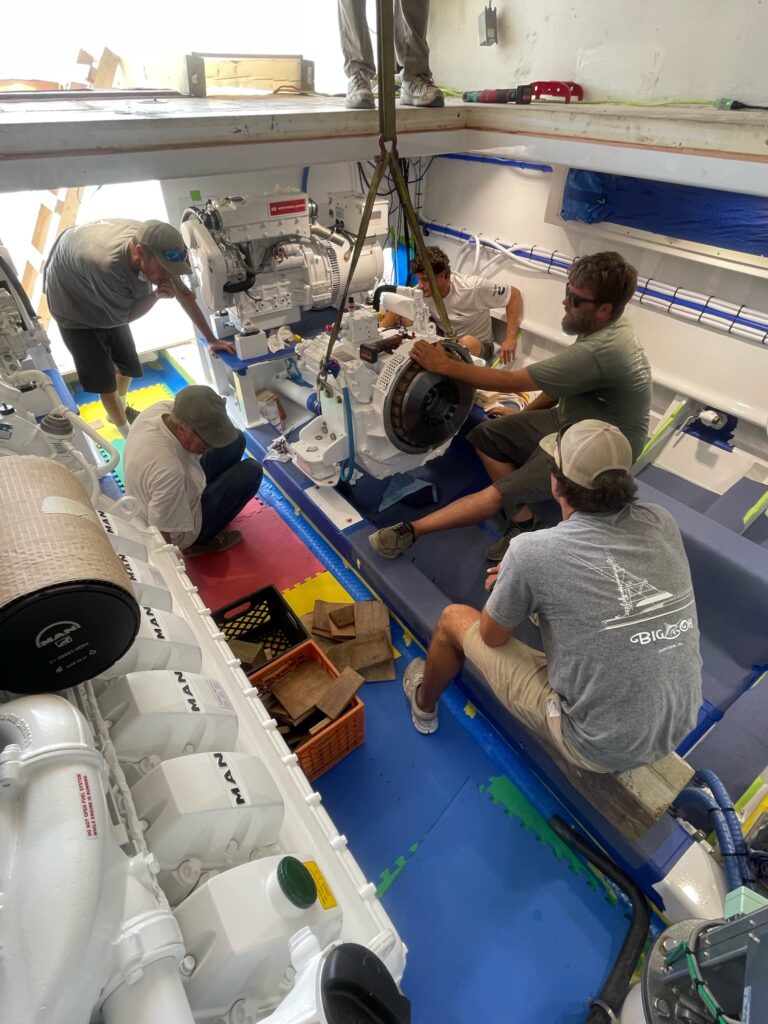
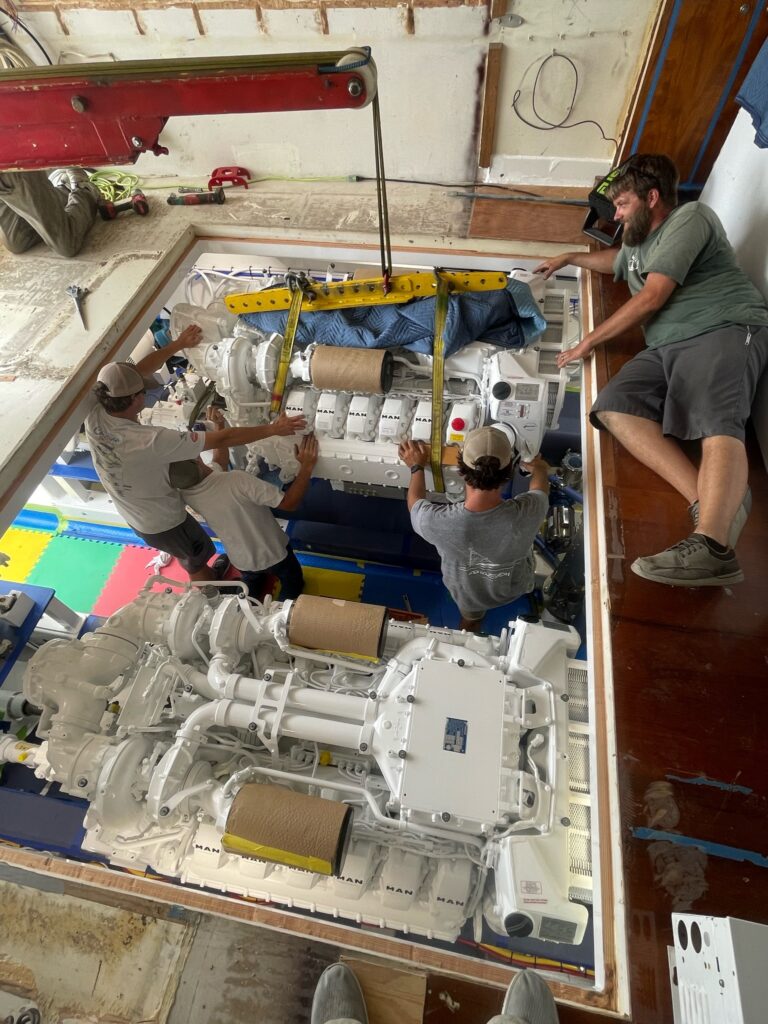
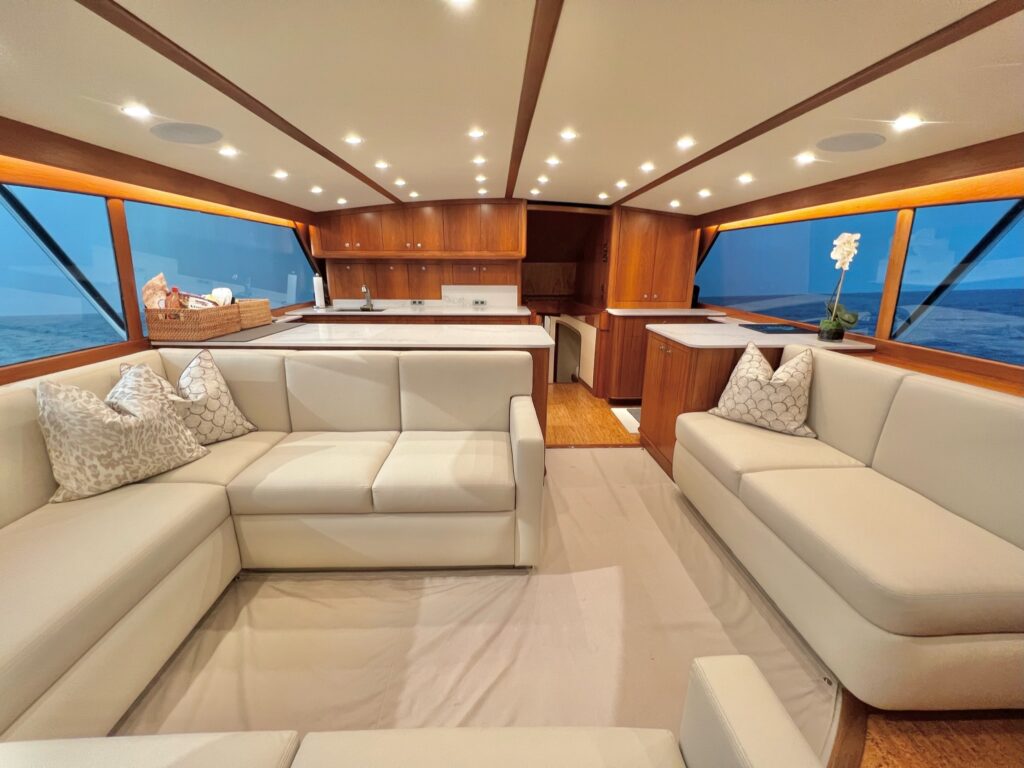

31 Bertram: Top-to-Bottom Renovation
Here’s a 1970 31-foot Bertram Bahia Mar undergoing a major top-to-bottom refit in Michigan. The boat currently has old Perkins diesels, but new motors are coming in. It will be completely done in the spring. Lots of custom work is going into this project – locker boxes, motor boxes, completely new cabin, teak deck, basically everything is being redone! We’ll follow up on this refit in the near future.


The bottom line is you can do as little or as much as you like, and while the money matters, it’s not the only thing to consider. If you have a boat you really like and you plan to keep it, the investment in personal happiness outweighs the potential loss of resale value. I always argue with people who say boats are bad investments, because I believe the opposite: There’s no better way to spend your money! The freedom and opportunities for adventure they provide can’t be measured, so whether you’re looking to do something simple, or take a boat down to the stringers and rebuild her from the ground up, keep that in mind. Plan carefully but do it.
Don’t Forget to Check Out Our Sportfishing Job Board! Did You Know? It’s the perfect platform for seeking skilled captains and mates. Whether you’re on the hunt for your dream team or looking to join one, your next big adventure begins here. Explore the opportunities now! Click Here
Dive Deeper into the World of Sportfishing
Unlock Exclusive Savings: Enjoy 50% Off Your Subscription!
Are you ready to explore the thrilling world of sportfishing from the comfort of your home? Subscribe now and embark on a journey filled with captivating stories, expert insights, and insider tips. Choose between our digital or print edition and secure an incredible 50% discount on your subscription.
Subscribe today and get ready for an adventure like no other. Click here to subscribe and elevate your sportfishing experience with InTheBite Sportfishing Magazine.







